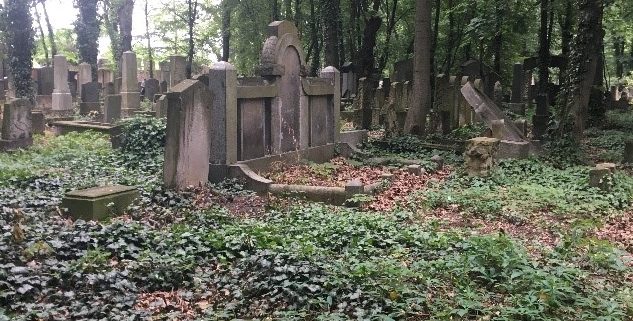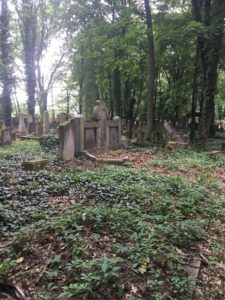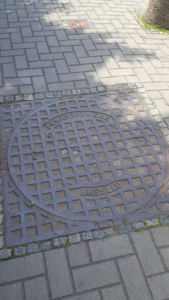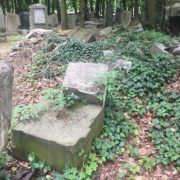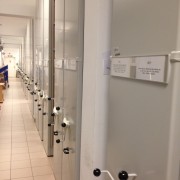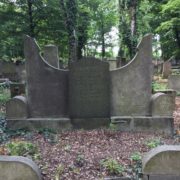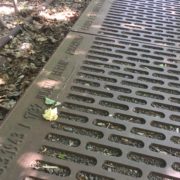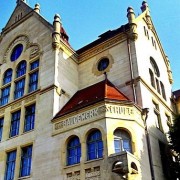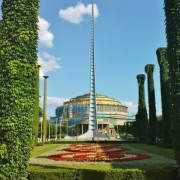Remnants of a Complicated History
By Abigail Thaine
The city of Wroclaw has a long and complex history. First documented in the year 1000, Wroclaw has experienced many transitions of power between empires and nation-states. Poland lost control of this region, known as Silesia, for hundreds of years. It was not until 1945 that they regained control over Wroclaw. To the average tourist today, the city appears distinctively Polish. This was the objective of efforts that spanned decades to de-Germanize Wroclaw. Evidence of the transition’s turmoil are still evident in the city.
Transitions of Power
In the previous millennium control over Silesia alternated between Poland, Bohemia, The Habsburg Empire, Prussia, and the nation-state of Germany. Under first Prussian, then German control, Wroclaw was renamed Breslau. In this period the city grew and expanded. At the Potsdam Conference, shortly after the war’s conclusion, the border between Germany and Poland was redrawn. It was shifted 150 miles west to the Oder-Neisse Line, leaving millions of Germans in Polish territory. According to research presented by Gregor Thum[1], before WWII approximately eight million Germans lived in these lands. Following the war, Eastern Germans were then forced to leave behind many of their belongings and homes to relocate to West and East Germany. The region of Silesia was repopulated between 1945 to 1948 by 200,000 to 300,000 Poles from varying locations and backgrounds. In the years to come many more people resettled here and established their new post-war lives in the city and the region. The city of Breslau, now under Polish control, was now known by a Polish name of Wroclaw.
Postwar de-Germanization
The period directly following the war was defined by an effort to remove all German traces from the city. Thum refers to this time period as an act of ethnic cleansing. The reasons behind this were three-fold. First, Poland had become loyal to the communist ideology. The city possessed a different mentality and set of values than they had before the war. Second, Nazi Germany occupied Poland during the war. The Nazi’s caused significant distraught and destruction. The Poles did not want to live in a city that would serve as an endless reminder to this regime. Lastly, after being forced to leave their homes in the East, Poles were eager to make a new place feel like home. The combination of these factors explain the rationale behind Wroclaw’s ethnic cleansing.
There are many prime examples of postwar de-Germanization. In official government propaganda at the time, Poles were not taking over German lands, but were “regaining” territories that had once belonged to medieval Poland during the rule of the Piast dynasty a millennium prior. In schools, the reason behind the border change was explained in one-sided pro-Polish, nationalist tones. History was taught subjectively and under the same mentality. Geographic locations and street names were either completely changed or translated to Polish. As mentioned at the Centrum Historii Zajezdnia, a museum in Wroclaw that focuses on the postwar history of the city, several streets in Breslau had been named after stories and characters in the Grimm’s Fairy Tales. However, since the Brothers Grimm were of German origin, the streets were assigned different names postwar.
Additionally, many statues and signs were taken down. In October 1945, the largest statute in the city which commemorated a former emperor, was removed. This process received significant fanfare. Buildings built in accordance to German architecture and style were knocked down, rebuilt, or adapted to look traditionally more Polish. German art work and literature were mistreated and ultimately lost. German cemeteries went forgotten and the tombstones could often be found in place of sidewalks. Former residents of Breslau could no longer recognize the town in which they were born and raised. It did not feel like their home.
With that being said, it is important to keep in mind the spirit of times of 1945 and the context in which this transition happened. After six violent years of war and German occupation in Poland, Germans were perceived only as brutal perpetrators and German heritage as symbol of the former occupying power. Despite the official government version of events that suggested that Poles were “returning home”, for the new Polish settlers, German Breslau-turned Wroclaw was a foreign place. Many of them were refugees due to the war or had lost their homes in territory then assigned to the Soviet Union.
The New Jewish Cemetery
From what I have witnessed, a prominent example of the de-Germanization is The New Jewish Cemetery. In 1902, this cemetery was established for German Jews. During the war, parts of the cemetery were damaged by the Nazis. This can be witnessed by the bullet holes that litter the bordering brick wall. During the war, some burials did take place at the cemetery for those few Jews remaining in the city, as well as, for Jews who died nearby while carrying out forced labor. However, much of the damage occurred in the latter half of the 20th century, specifically the late 1980s and 1990s. While efforts to restore the cemetery have been under way for close to a decade, The New Jewish Cemetery is still in disarray. Many headstones are either broken, tipped over, or entirely missing. The earth has grown up around the gravesites, erasing the memories of those who were laid to rest at this location. Before the cemetery’s border walls were repaired and closed, grave robbers rummaged to find valuables such as gold teeth. Anti-Semitic words and symbols are spray painted all around. The further into the cemetery that one goes, the less it resembles a graveyard due to the fact that any of the stones were stolen and reused for a variety of purposes. Many of the cemetery’s pre-war burial records were also lost or destroyed. Some information about burials occurring after 1926 did survive, however, the information is incomplete and limited. It is difficult, if not somewhat impossible, for family members to find their loved ones buried here.
To the untrained eye, many fail to see remnants of Breslau today. Polish Wroclaw allocated significant effort to erase the memories and history of the former city. They were successful for the most part, but evidence of Breslau is not far away. With a critical and observant eye, one can notice these memories. German built and world renowned, Centennial Hall, still stands proudly. Several street manhole covers still bear the Breslau name. Hidden a little further away, The New Jewish Cemetery remains a living testimony to the destruction not only of the Jewish community, but to the city itself throughout the half century. It is with great hope that Wroclaw can become a city that celebrates and honors both its German and Jewish past as well as its Polish future.
[1] Thum, Gregor. “Ethnic Cleansing in Twentieth-Century Europe”. Columbia University Press. 2003, 333-357.

